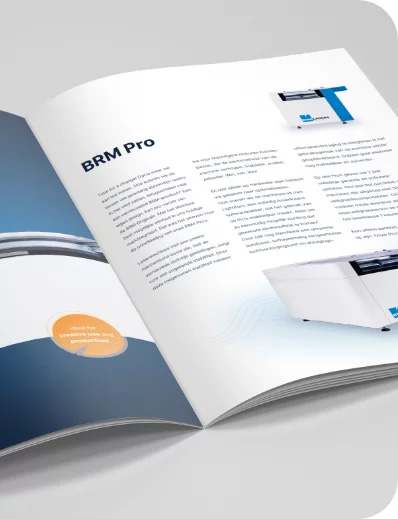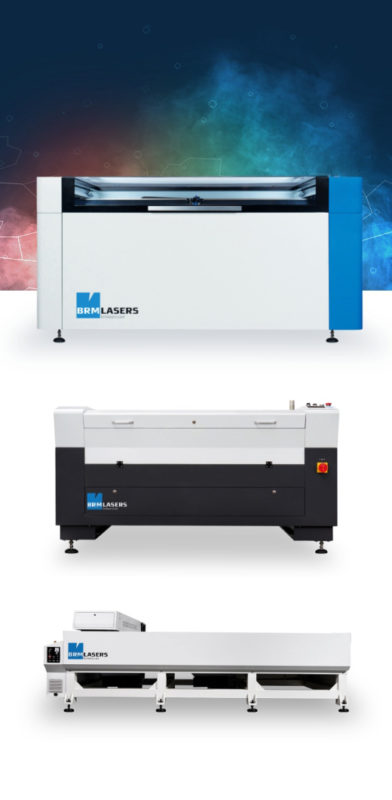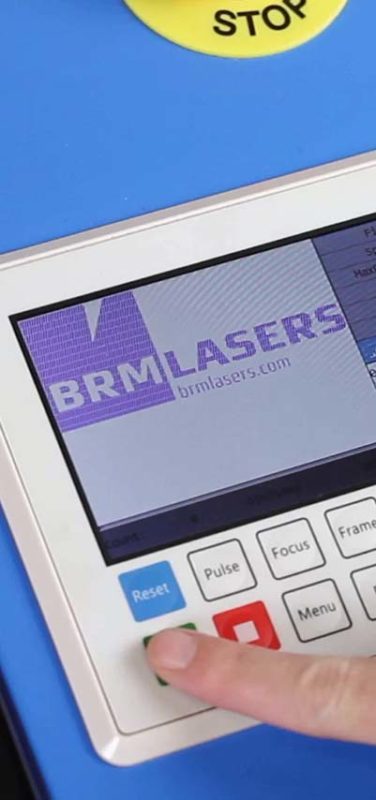I have a BRM 90130-X or a Budget 90130-X and I would like to know if I can cut certain metals. Please note that the machine needs to be suited to cut metal! If it is unsuitable for cutting metal and you try to do it anyway, it may break down.
Not sure whether your machine is suitable for cutting metal? Then send your question with a picture of the machine's type plate via a ticket to BRM, and we will check it for you.
To cut metal with your machine, you will have to switch it from the acrylic mode to the metal mode. If you want to cut metal in the acrylic mode, it won't work.
When you set the machine in metal mode, you also need to use the right lens. The lens you use to cut metal is only suitable for machines that can actually cut metal. This lens is larger than the lens you use to process wood and other materials, you can identify by this that it is a lens specifically for cutting metals.
Also, in metal mode, you use the head that adjusts focus automatically. That is necessary because the focus distance from the lens to metal requires exact accuracy. Due to the required high gas pressure, you move your material, so the focus height has to be adjusted continuously. When the machine is in metal mode, the head will follow and adjust this itself. As a result, the focus height always remains correct.
In general, there are a few types of metal that may and can be cut with the BRM90130-X and BRM Budget90130-X.The following metals can be cut.
- All types of iron.
- Non-alloy steels. Stainless steel is an exception. This is an alloy but can be cut.
Iron, steel and stainless steel are all very pure metals. The laser beam has the right power and absorption at the wavelength, which means the laser beam is not being reflected, but absorbed. As a result, these metals can be cut. These metals can be cut, up to a thickness of 1.25 mm.
If you do want to cut any thicker, there is a high risk of not getting through your material. There is also a risk that the cut will not turn out nicely. You may get a wide cutting line. You bring too much heat into your metal, causing it to melt uncontrollably.
The metals below cannot be cut.
- Precious metals. Such as gold, silver, etc.
- Alloys.
- Aluminum.
With these materials the absorption wavelength is different, so the laser beam will reflect instead of being absorbed. As a result, you cannot cut these metals.
A 150 W laser source on its own has too little power to cut through metals. By adding oxygen, you feed the fire so you can get enough power into the material and cut it. By doing so, you compensate for the power of the laser source.
What is the required degree of purity for the oxygen?
The minimum recommended degree of purity for the oxygen is 3.5. You want your oxygen to be as pure as possible. That allows you to cut faster and also gives you a better result. If you take oxygen with a purity degree of less than 95 %, getting a better result becomes a real challenge. The production speed will also have to be reduced. In case of cutting problems that you cannot solve, choosing pure oxygen (with a higher purity degree) can be the solution.
The lens used to cut metal has a different coating from the one you use for cutting wood and acrylic, for example. The coating of the metal lens stops the reflections and scatter radiation that occurs when cutting metals. That prevents the laser beam from reflecting to the laser source. The coating of the lens you use with wood and acrylic, on the other hand, cannot, so the laser beam reflects to the laser source. Reflection will damage the laser source.
Engraving with a metal laser without laser spray is highly inadvisable. Not even with the metal lens and certainly not on metal mode. If you do try to mark a metal without adding laser spray, your material will burn and a crater may form. That causes the laser head to lower because the laser head wants to adjust the focus height. As a result, the laser head lowers too far because no material is detected. But the laser head continues to move back and forth and, as a result, will eventually collide when it suddenly encounters material.
To still be able to mark metal with the BRM90130-X or BRM Budget90130-X with the addition of a laser spray, you will have to set the machine in acrylic mode. That will disable automatic adjustment of the focus height. You can now start marking your material with the lens you usually use for wood and acrylic. You can use the Z- and Z+ to set the head to the correct focus height.
| Do not mark metal without the use of a laser spray. If you do mark metals without a laser spray and the laser source is damaged, this is not covered by warranty! |
|
|
|
Check this article about material parameters.
Check this article about laser spray.
The parameters for cutting a metal come quite precisely. Metals have a certain melting temperature that must be taken into account.
Up to that value, you create a lot of burr at the top of your material. This is molten material. Burr is something you will continue to have until you get through your material.
Set your laser power to maximum (98 %) and add lots of oxygen, which may be as much as 8 bar. Select a high speed and decrease it in steps until you do get through your material. You must make the various cuts side by side. With metal, you cannot go over your cut again. When you heat metal and it cools down again, the material hardens which requires more power a second time. That is impossible, so you will need to make a new cut next to it.With regular steel, you may need a speed between 20 mm/s and 50 mm/s with full power and sufficient oxygen.
Iron is slightly easier to cut. Here you may already get through at, say, 80 mm/s with full power and enough oxygen. Of course, that also depends on the alignment of the mirrors and lens.
If it seems like the machine is welding instead of cutting, that may be due to the alignment of the mirrors. It could also be that the speed is a bit too high. Also, use enough oxygen. When using too little oxygen, this can also occur. 8 bar is the maximum the machine can handle, so you can certainly use that to cut nicely and fast.
If you use less oxygen, you will need to reduce your speed somewhat to still get a good result. Should you want to add less oxygen to save costs, you will probably be disappointed. Adding less oxygen means you need more time to cut out the product. As a result, you will still use as much or even more of it.
Finding the correct parameters is quite difficult when cutting metals because it requires great precision. Each metal has a different melting value, so the parameters of stainless steel, for example, cannot be copied one on one for iron.
When you get any craters in your material, you will have to increase speed. Too much heat is getting into the material, causing it to melt.
If a brownish edge appears along the cut, you can also cut a little faster. The heat cannot cool down fast enough, causing the edge to turn brown. You may also need to use a bit less oxygen.
If burrs form at the top of your material, it could be a sign of the correct speed but not enough oxygen. The oxygen is not blowing enough combustion downward.If you have burrs on the bottom of your it, you should be able to remove them easily with your finger. If that is not the case, you can cut just a bit faster.
If you have any further questions please feel free to create a ticket.






